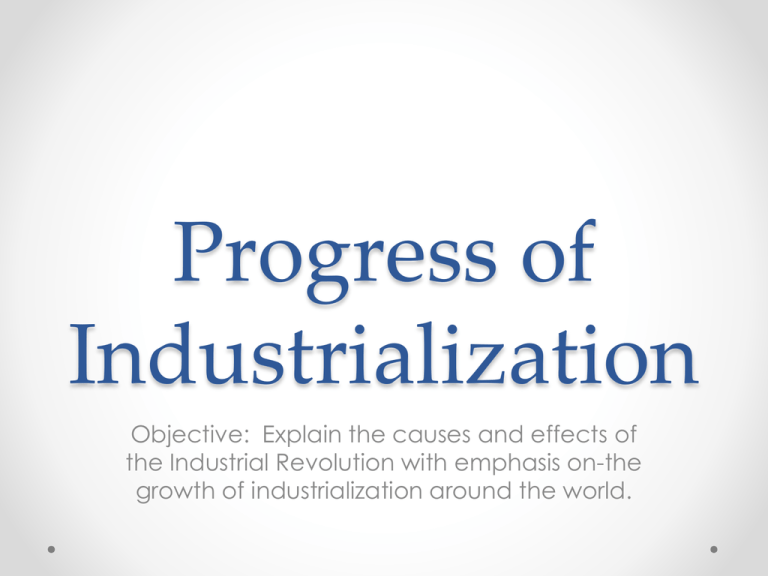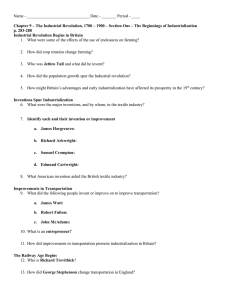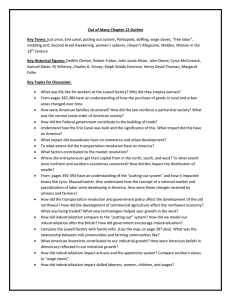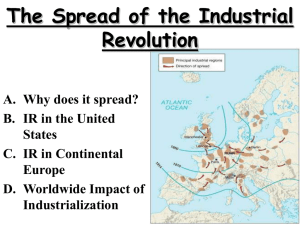Progress of Industrialization
advertisement

Progress of Industrialization Objective: Explain the causes and effects of the Industrial Revolution with emphasis on-the growth of industrialization around the world. Progress of Industrialization • When other nations began to industrialize, England tried unsuccessfully to protect its lead by prohibiting the export of the inventions described earlier. • The first European country to industrialize was Belgium. • In 1817, an Englishman, John Cockerill, opened textile factories there. • After Belgium, France and Germany began slowly to modernize their manufacturing procedures. Progress of Industrialization • By the 1820s, United States entrepreneurs using English technology had set up textile mills in New England. • The most famous were the mills in Lowell, Massachusetts. • After the Civil War, the United States experienced a surge in industrialization caused by its abundance of natural resources and raw materials. • Cheap labor was supplied by the huge increase in immigrants as well as by people moving from the country to towns and cities. • By the early 20th century, the United States led the world in manufacturing. Rapid Development of Technology • Technological innovations became more advanced as industrialization spread. • The period of the late 1800s, often called the Second Industrial Revolution, was characterized by greater and more rapid technological developments than the earlier industrial revolution. Greater Use of Steel • Steel is stronger and more flexible than iron. • Then, too, it does not rust. • Therefore, steel replaced iron as the material from which railroad tracks, beams for skyscrapers and bridges, and machines were made. • The use of electricity as a power source became widespread in the late 1800s. • Thomas Edison produced the first light bulb, which allowed factories to operate at night. • Electric street lamps made city streets safer. Electricity Advances in Communication and Transportation • Communication changed with Alexander Graham Bell’s invention of the telephone in 1876. • Edison’s improvements to the telephone made it more practical for widespread use. • The invention of the internal combustion engine led to the development of the automobile, which transformed transportation. • The innovations that occurred during the Second Industrial Revolution helped shaped the world we know today.











